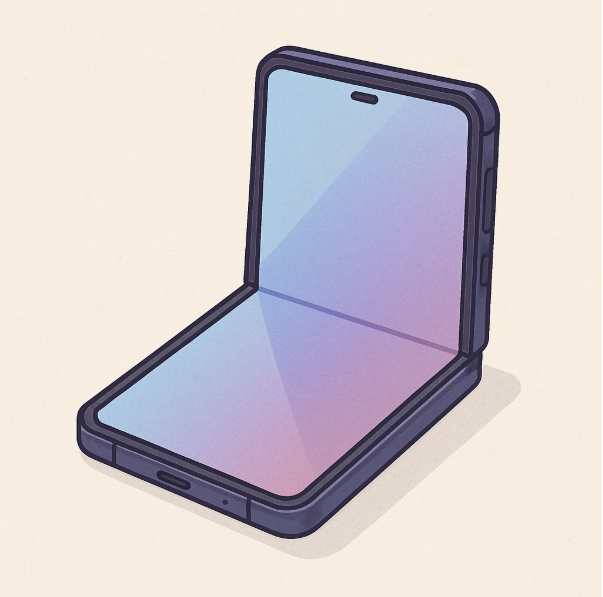Foldable phones are no longer just a futuristic concept—they are here and rapidly redefining the smartphone landscape. As technology evolves, foldable phones represent a significant shift in the design and functionality of mobile devices. This article explores the future of smartphones, focusing on the evolution of foldable technology and its implications for businesses and consumers alike.
Foldable phones first captured the public’s imagination as prototypes at technology expos, promising a new era of mobile design. These devices feature flexible displays that can be folded, offering a unique blend of portability and screen real estate. The technology behind foldable screens involves advanced materials and engineering, allowing screens to bend without breaking.
Key Milestones in Smartphone Evolution
The journey of smartphones from simple communication devices to multi-functional gadgets has been extraordinary. Initially, smartphones focused on enhancing connectivity with features like email and web browsing. As technology advanced, we witnessed the integration of cameras, touchscreens, and powerful processors. Foldable phones are the latest leap, promising to transform user interaction with devices.
Why Foldable Phones Matter
Foldable phones bring a fresh perspective on how devices can be used in daily life. They offer several advantages:
- Increased Screen Size: By unfolding, users gain more screen space without compromising portability.
- Multitasking Capabilities: Larger screens facilitate better multitasking, allowing users to run multiple apps simultaneously.
- Innovative Design: Foldable phones represent a new design philosophy, combining aesthetics with functionality.
The Business Implications
For Chief Technology Officers (CTOs), Business Strategists, and Innovation Managers, foldable phones present both opportunities and challenges. These devices are not just technological novelties; they have the potential to impact business operations and strategy significantly.

Opportunities for Business Growth
Foldable phones can open new avenues for business growth. Their unique design can enhance customer engagement through immersive experiences. For instance, companies can develop apps that leverage the larger screen to offer richer content and interactive features. This can be particularly beneficial in sectors like gaming, education, and media.
- Enhanced User Experience: Businesses can create apps that utilize the foldable screen to provide a more engaging user experience.
- New Market Segments: Foldable phones can attract tech-savvy consumers looking for the latest innovations, creating new market opportunities.
Challenges in Implementation
While foldable phones offer exciting possibilities, integrating them into business strategies requires careful planning. Companies must consider:
- Cost: The advanced technology in foldable phones often comes with a higher price tag, which may affect consumer adoption rates.
- Durability Concerns: The folding mechanism poses questions about the long-term durability of these devices.
- App Development: Businesses need to invest in developing apps specifically designed to take advantage of the foldable screen.
The Future of Smartphones
As foldable technology matures, we can expect to see its impact on the broader smartphone market. Here are some trends and predictions for the future of smartphones:
Integration with Other Technologies
Foldable phones are likely to integrate with other emerging technologies such as 5G, artificial intelligence (AI), and augmented reality (AR). This integration can enhance the functionality and appeal of foldable devices, making them central to the digital ecosystem.
- 5G Connectivity: With faster internet speeds, foldable phones can handle more data-intensive applications, improving user experience.
- AI Features: AI can optimize the functionality of foldable phones, offering personalized user experiences and smarter device management.
- AR Applications: The larger screens of foldable phones can provide a more immersive AR experience, opening new possibilities for gaming, shopping, and navigation.
The Role of Manufacturers
Leading smartphone manufacturers are investing heavily in foldable technology. Companies like Samsung, Huawei, and Motorola have already launched foldable models, each showcasing different approaches to design and functionality. As competition intensifies, we can expect rapid advancements in this space, leading to more affordable and durable devices.
- Innovation Drives Competition: The race to develop the best foldable phone will drive innovation, benefiting consumers with better products.
- Focus on User Experience: Manufacturers will prioritize user experience, ensuring that foldable phones are not only innovative but also practical for everyday use.
Limitations and Considerations
While foldable phones hold great promise, there are limitations to consider. Battery life, weight, and the need for protective cases are some of the practical challenges users may face. Additionally, the high cost of these devices may limit their accessibility to a broader audience.
- Battery Life: The larger screens of foldable phones may drain batteries faster, necessitating advancements in battery technology.
- Device Weight: The additional components in foldable phones can make them heavier, impacting portability.
- Cost Accessibility: As manufacturing processes improve, costs are expected to decrease, making foldable phones more accessible over time.
Conclusion: Embracing the Foldable Future
Foldable phones are poised to redefine the smartphone industry, offering a glimpse into the future of design and functionality. For businesses and consumers alike, these devices represent an exciting frontier in mobile technology. By embracing foldable phones, companies can stay ahead of the curve, leveraging new opportunities for growth and innovation.
As we look to the future, foldable phones will likely continue to evolve, integrating seamlessly into our digital lives. For industry leaders, understanding the potential and limitations of these devices is crucial to harnessing their full potential and driving technological advancement.
Foldable phones are not just a trend—they are the future of smartphones, shaping the way we connect, work, and play in an increasingly digital world.




